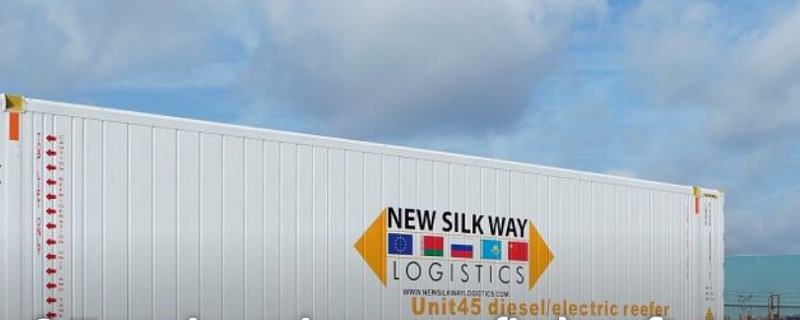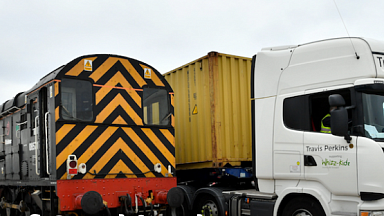It is the key phrase that companies of this time are looking for. Zero emissions, climate neutrality, or green transport is what many of them aim to achieve. With the recently presented Fit for 55 Package, the race for decarbonisation of transport has accelerated.
«The first step is the shift from road to rail, the second is the right choice of rail connections to Asia,» explains Oscar Vermeij, Managing Director of the logistics firm. Rail is the greener mode of transport, but even within the industry, a lot can be done to go even greener. New Silk Way Logistics has developed its transport solution over the years, and is now able to provide climate neutrality, Vermeij explains. «All the way from Duisburg to Chongqing.»
The Coolbox
One of the milestones for the company was the launch of a new type of reefer container, the Coolbox. This container is able to better stabilise the temperature base within the container, allowing it to transport temperature-sensitive goods over long distances. «You should think of products like salmon, whipped cream, cheese and milk, which need a stable temperature of 5 degrees along the entire route to China. This new container is specially designed for this range,» says Hanno Reeser from H.Essers.
But that is not the only advantage of the Coolbox. «It operates on renewable arctic biofuel: a type of fuel that does not freeze when subjected to extremely low temperatures, Erik Loijen, from KLG Europe continues. The new engine is stronger, at the same time it consumes less fuel compared to previous models. The reefer does not need to be refuelled on the way since it travels with 900 litres of diesel aboard. These are all advantages with an environmental benefit.»
The Coolbox has been successfully tested and is now already doing rounds on the route between Europe and China. Soon, it will also become available to the European market, as there are two types of units. Where one container has a 900-litre tank, which is good for a one-way journey to Asia, another container has a 350-litre tank, perfect for the European industry.
Zero emissions
The Coolbox has made it possible to provide a more economical shipment, but the climate-neutrality of the journey covers the fact that on the entire route, the transport is carried out with electric locomotives. «This was already the case», Vermeij adds. «Only the shunting part is still being carried out with diesel locomotives».
Nevertheless, the zero-emission label of the transport solution is an attractive offer for those companies currently still making the shift from ocean, air and road to rail. New Silk Way Logistics is expecting more volumes to shift to the railways from the chemical industry, which has large volumes of traffic still going over the road. That being said, many of these companies, coming from the pharmaceutical, electronic and food-stuff industries, are already familiar with the rail freight solution. «These are the customers that perfectly match their supply chain based on the rail mode», Vermeij said.




